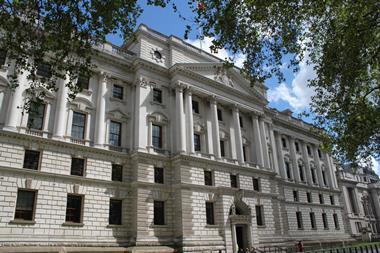At COP29, the UK prime minister said he won’t increase the nation’s public sector finance contributions beyond the £11.6bn (€14bn) already pledged until 2025/26, even if other countries do.
Instead, he argued that the onus should be born more heavily by the private sector. “I think it’s high time the private sector played their part in this,” Keir Starmer said.
The good news is that institutional investors are already upping their financial commitments to climate-related investments.
Given that we are on the precipice of an “irreversible climate disaster”, according to the fifth annual State of the Climate report led by Ripple, the efforts of pension funds to tackle the challenge is welcome news.
Border to Coast Pensions Partnership recently made a £48.5m commitment to a Capital Dynamics-managed UK clean energy fund created to finance onshore wind, solar and battery storage projects.
The manager of £48bn of assets on behalf of 11 UK local government pension schemes (LGPS) said the capital commitment to the Clean Energy UK Fund represents the pension pool’s first investment within its innovative UK opportunities portfolio.
The £500m UK Opportunities portfolio – launched in April this year – targets long-term, impact-driven investments in housing, transport, energy and growth finance.
Border to Coast is also leading the way in efforts to further consolidate the LGPS pension pools. It has launched a £1.2bn UK real estate fund alongside three of its LGPS partner funds by collaborating with Tyne and Wear Pension Fund, Cumbria Pension Fund and South Yorkshire Pensions Authority to pool 65 existing holdings to seed the UK real estate fund.
Border to Coast, which holds responsibility for the strategic direction of the fund, said it has appointed to implement the strategy at portfolio level.
There is plenty of potential for further lucrative investments in climate related investments. The real estate industry, responsible for 37% of global carbon emissions, has a unique opportunity to proactively address climate change, according to two new publications from the Urban Land Institute’s (ULI) C Change programme.
By collectively developing a voluntary carbon pricing mechanism, the industry can significantly accelerate decarbonisation, foster innovation and potentially mitigate future regulatory risks, according to the ULI reports.
The report underscores the business case and wider benefits of internal carbon pricing, and highlights best practice through case studies, to demonstrate the potential in taking early action to reduce emissions across the value chain and capitalise on emerging opportunities in the transition to a low-carbon economy.
There have been other large climate-related investments in recent weeks.
Caisse de dépôt et placement du Québec, GIC, Prudential and Temasek are among new investors joining Brookfield’s Catalytic Transition Fund (CTF) which has secured nearly half of its fundraising target of up to $5bn (€4.5bn) to invest in clean energy and transition assets in emerging markets.
Altérra, a climate-focused fund created by the United Arab Emirates at the COP28 Climate Summit, made a $1bn capital commitment to CTF to the Brookfield fund back in December 2023.
Brookfield said the fund is expected to announce its first investments later this year and is aiming for a first close by early 2025.
In another significant move, Climate Asset Management, the natural capital joint venture between HSBC Asset Management and Pollination, has reached a final close for its Natural Capital Fund and Nature Based Carbon Fund. Alongside Apple’s Restore Fund, the platform has now raised more than $1bn for natural capital projects.
The Natural Capital Fund targets financial returns alongside improved environmental outcomes from real asset investments in regenerative agriculture, sustainable forestry and environmental assets across developed markets.
The fund has attracted investment from pension funds and insurance companies, including German insurer Gothaer, which has committed $100m.
To read the latest 91��ý���� magazine click here.






















